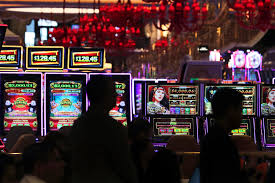Authentic-looking ID
Introduction:
"The Need for Realism: Why Authentic-Looking IDs Are So Popular"
The demand for realistic, authentic-looking IDs has surged in recent years. From novelty purposes to collectors and even businesses needing professional ID creation, these products represent a fine balance between artistic craftsmanship and cutting-edge technology. This article provides a comprehensive analysis of the features that make these IDs so convincing, the ethics of the industry, and who the major players and customers are.
1. Product Features: What Makes an ID 'Authentic-Looking'?
1.1. Detailed Visual Accuracy
Realism in ID creation is critical. This section explores the technical aspects of how authentic-looking IDs are crafted, from accurate holograms, watermarks, and microprint, to specific card textures and barcodes that work.
1.2. Use of Advanced Printing Technology
In this subsection, the discussion focuses on the modern printing technologies used to produce such IDs. Special printers capable of embossing, holographic overlay, and UV ink contribute to the realism that’s almost indistinguishable from the real thing.
1.3. Layering Security Features
Authentic IDs have multiple security layers, and fake ID manufacturers mimic this to create realistic products. These features often include RFID chips, laser engraving, and optically variable devices (OVDs). This section dives into how these features are replicated and integrated into the final product.
1.4. Personalization Options
From custom ID numbers, photos, and birthdates to background textures and state emblems, personalization is key. Customers seek IDs that not only look authentic but are customized to their preferences. This subsection examines the extent of personalization that can be achieved.
2. Market Analysis: The Demand for Authentic-Looking IDs
2.1. Market Segmentation
The market for authentic-looking IDs is broad. This section discusses the different customer segments, including collectors of novelty IDs, prop designers for film/theater, pranksters, and people seeking IDs for practical purposes such as getting into bars or clubs.
2.2. Geographical Demand
Certain countries and regions show a higher demand for fake IDs. This part examines the areas where this demand is most concentrated and the factors driving it. For example, the USA and Europe have robust markets for fake IDs due to strict legal age restrictions on drinking and access to venues.
2.3. Industry Growth and Forecasts
With advancements in technology, the fake ID industry is booming. A data-driven analysis of the market's growth, including revenue generation and projected trends over the next five to ten years, will be presented.
3. Target Audience: Who Buys Authentic-Looking IDs and Why?
3.1. Age Groups and Motivations
While young adults (18-25) are often the primary buyers, especially in countries with strict age laws, other demographics also participate. This section discusses the different age groups and their reasons for purchasing these products, such as access to clubs, events, or even using IDs as props or collectibles.
3.2. The Role of Students
A significant portion of ID purchasers are university students. Their motivation often stems from wanting to bypass age restrictions for alcohol and entry to certain venues. The psychology of these students and their risk tolerance will be discussed.
3.3. Professionals and Hobbyists
Beyond students, there’s a smaller but notable market for professionals in need of high-quality fake IDs for theater, film production, and hobbyists interested in collecting novelty IDs. This section profiles this niche audience and what they're looking for in an authentic-looking ID.
4. Technology Behind Authentic-Looking IDs: Breaking Down the Craftsmanship
4.1. Laser Printing Technology
High-quality laser printers capable of precision printing play a crucial role in producing professional-grade fake IDs. This section covers the types of printers commonly used and how their technology ensures the product’s quality.
4.2. Security Inks and Watermarks
Modern security inks, like UV-reactive inks, add another level of realism. Detailed explanations of how these inks are used, alongside watermarks and translucent patterns, give readers a glimpse into the complexities of producing fake IDs.
4.3. Microprinting and QR Codes
Many legitimate IDs use microprinting and QR codes for verification. Here, the text discusses how fake ID manufacturers replicate this technology, including the challenge of making these features functional.
5. Ethical Considerations and Legal Implications
5.1. Walking the Line: Novelty vs. Illegal Use
While some fake IDs are produced for harmless novelty purposes or legitimate professional use, there is also a dark side. This section delves into the ethical concerns surrounding fake IDs and how businesses navigate the fine line between providing a legitimate service and enabling illegal activity.
5.2. Legal Repercussions for Consumers
Customers purchasing fake IDs often underestimate the legal consequences. This section outlines the laws in various countries concerning the possession and use of fake IDs, including potential penalties like fines, imprisonment, or having a criminal record.
5.3. The Role of Producers
Fake ID producers also face legal risks. This part highlights famous cases where fake ID manufacturers were prosecuted and how they tried to defend their business as a novelty product provider.
6. Challenges in the Industry: Obstacles Faced by ID Producers
6.1. Staying Ahead of Detection Technology
As governments and institutions improve their detection technology, fake ID producers must stay ahead of these advances. This section covers the arms race between official detection measures and counterfeiters’ innovation.
6.2. Supply Chain Issues
Sourcing high-quality materials like special inks, laminates, and RFID chips can be a challenge for fake ID producers. This part examines how producers overcome these logistical hurdles.
6.3. Online Distribution and Risks
With many fake ID operations running online, there’s a constant risk of websites being taken down or producers being targeted by law enforcement. This section discusses how the market has shifted to more secure online platforms and anonymous payment methods like cryptocurrency to avoid detection.
7. Marketing Strategies for Authentic-Looking IDs
7.1. Online Presence and Social Media Marketing
Fake ID producers rely heavily on online advertising, particularly through platforms like Reddit, Telegram, and niche forums. This section explores the methods used to reach their audience, including SEO strategies, content marketing, and word-of-mouth in underground networks.
7.2. Customer Reviews and Building Trust
Building trust is vital in the fake ID market, especially given the legal risks. Producers use customer testimonials, reviews, and product guarantees to establish credibility. This part explains how these strategies are employed to attract buyers.
7.3. Offering Discreet and Secure Payment Methods
Due to the sensitive nature of fake ID sales, producers must offer secure and discreet payment methods. This section highlights the most common forms of payment used, including Bitcoin and other cryptocurrencies, which offer anonymity and protection for both buyers and sellers.
8. Conclusion: The Future of Authentic-Looking ID Production
As technology continues to evolve, the fake ID industry faces both opportunities and challenges. This conclusion reflects on how the industry may develop in the coming years, including potential regulatory changes, technological innovations, and shifts in consumer behavior.
Appendices and References
- FAQs about Authentic-Looking IDs
- List of Recommended Resources
- Legal References and Case Studies
 University security solutions
University security solutions
 Fake ID
Fake ID
 Authentic-looking ID
Authentic-looking ID
 Smart student ID card technolo
Smart student ID card technolo